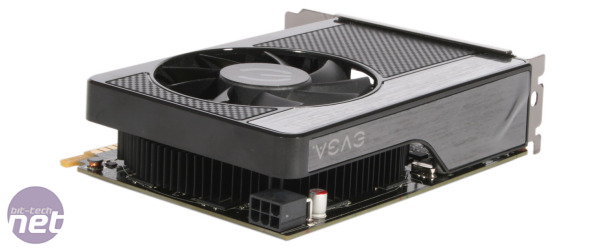GeForce GTX 650 Ti - Overclocking
Despite both cards under review featuring fairly substantial pre-applied overclocks, most cards normally still have a bit more left to give. We therefore did what comes naturally to us and fired up EVGA Precision for some manual overclocking, pushing up the frequencies until we were able to find the highest stable overclocks for each card.
First up was the EVGA GTX 650 Ti SSC, which we were able to overclock from 1,071MHz on the core to 1,122MHz. Although this is only a 5% increase, the factory overclock is already fairly high, and our overclock actually represents a whopping 21% increase from stock speeds. As the memory on the EVGA card is left at stock frequencies, we were hoping to push it fairly high, and we weren't disappointed. We added 0.25GHz (1GHz effective) to the 1.35GHz memory clock speed before it became unstable, taking it to 1.6GHz (6.4GHz effective), which is around an 18% overclock. Achieving these speeds required us to push 1163mV through the card, 50mV more than the default and the most that the card would allow.
The overclock we were able to apply to the Zotac GTX 650 Ti amp! Edition was almost identical to that of the EVGA card. With the maximum voltage of 1163mV running through it, we were able to push the core clock from 1,032MHz to 1,114MHz (an 8% increase) and the memory clock from 1.55GHz (6.2GHz effective) to 1.6GHz (6.4GHz effective), which matches the EVGA card and represents a 3% increase for the Zotac card.
As both overclocks were so similar, it was unsurprising to note that in their overclocked states, both the EVGA card and the Zotac card caused our system to draw 175W from the wall when we placed it under GPU load. This is a 14W increase for the Zotac GTX 650 Ti and a 9W increase for the EVGA one.
Comparative Frequencies
Given that the two cards differ in terms of the amount of memory available to them, we did some additional testing whereby we clocked the cards to the same frequencies to properly assess the impact of the extra 1GB of memory on the Zotac card.
To match the frequencies, we dropped the memory speed of the Zotac card back down to stock speeds, and pushed its core clock up to 1,071MHz, leaving it with the same core and memory clock speeds as the EVGA card. We then re-tested it in both Battlefield 3 and Crysis 2 at 2560 x 1600 as higher resolutions tend to take more advantage of higher amounts of memory.
Read our performance analysis on the next page.

MSI MPG Velox 100R Chassis Review
October 14 2021 | 15:04










Want to comment? Please log in.